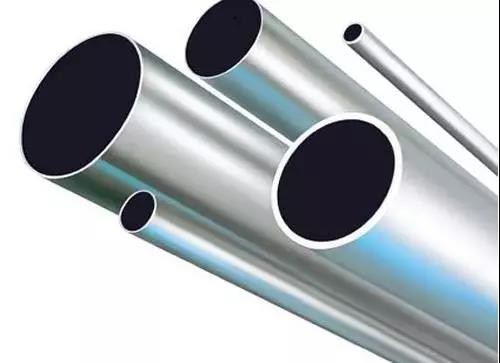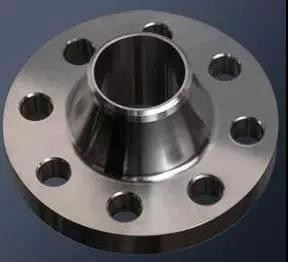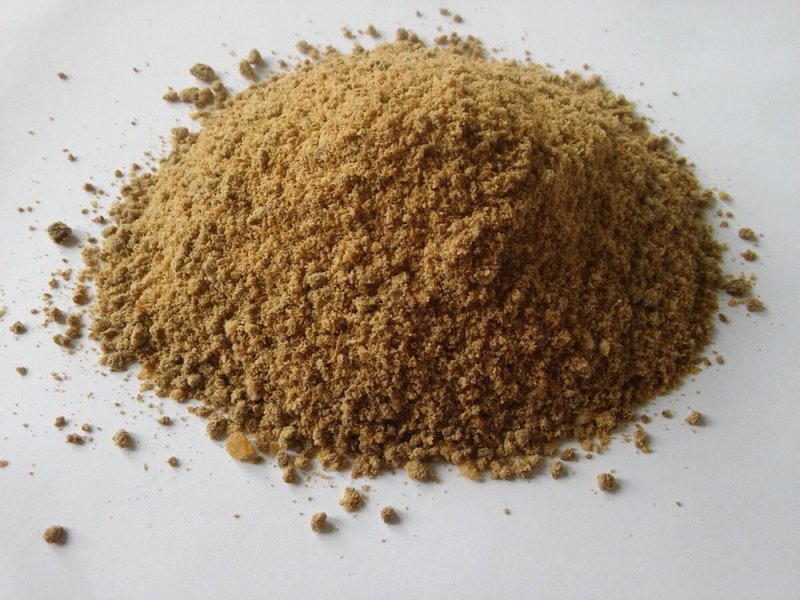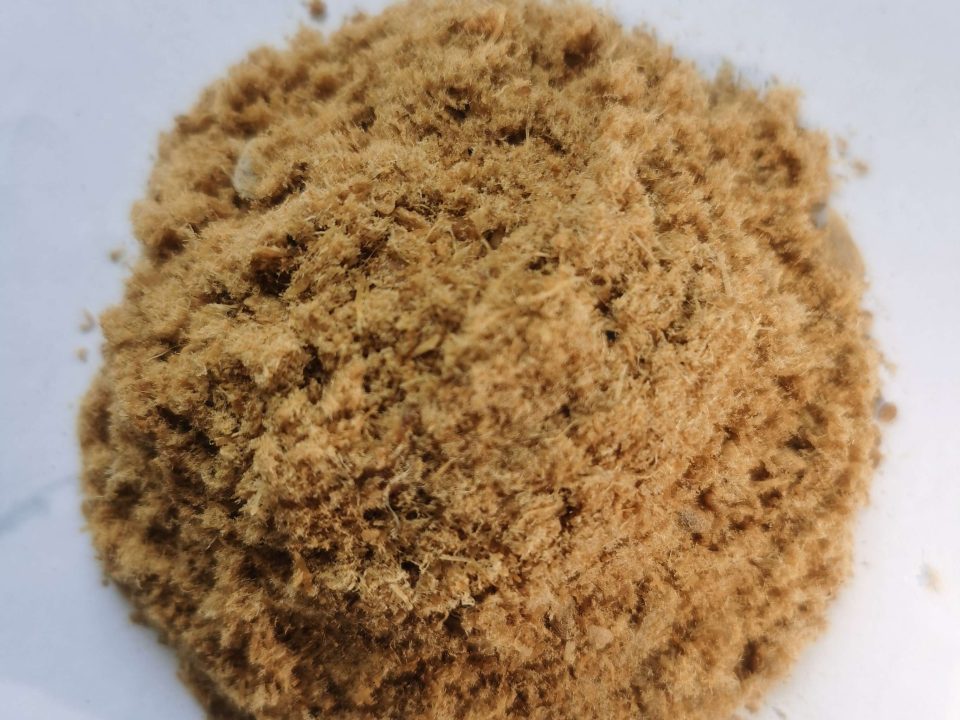Steel pipe Knowledge for feed additive factory construction

Emergency eyewash for feed factories.
March 17, 2023Effects of Choline Chloride on Photosynthetic Performance and Growth of Wheat
May 19, 2023Generally speaking, the diameter of the pipe can be divided into outer diameter, inner diameter and nominal diameter. The outer diameter of a pipe made of seamless steel pipe is represented by the letter D, followed by the size and wall thickness of the outer diameter. For example, a seamless steel pipe with an outer diameter of 108 and a wall thickness of 5MM is represented by D108*5. Plastic pipe It is also represented by the outer diameter, such as De63. Others such as reinforced concrete pipes, cast iron pipes, galvanized steel pipes, etc. are represented by DN. In design drawings, the nominal diameter is generally used. The nominal diameter is artificially specified for the convenience of design, manufacture and maintenance. One of the standards, also the nominal diameter, is the specification name of the pipe (or fitting).
The nominal diameter of the pipe is not equal to its inner diameter and outer diameter. For example, there are several kinds of seamless steel pipes with a nominal diameter of 100MM, such as 102*5, 108*5, etc., 108 is the outer diameter of the pipe, and 5 represents the wall thickness of the pipe. Therefore, the inner diameter of the steel pipe is (108*5-5) = 98MM, but it is not exactly equal to the difference between the outer diameter of the steel pipe minus twice the wall thickness. It can also be said that the nominal diameter is close to the inner diameter, but not equal to the inner diameter A specification name for the diameter of a pipe. The nominal diameter is used in the design drawings. The purpose is to determine the structural dimensions and connection dimensions of pipes, fittings, valves, flanges, gaskets, etc. according to the nominal diameter. The nominal diameter adopts the symbol DN. Said that if the outer diameter is used in the design drawings, a pipe specification comparison table should also be made to indicate the nominal diameter and wall thickness of a certain pipe.
Tube series standard
In the design and construction of pressure pipelines, the selection of standard series of pressure pipelines and their components should be considered first. Although there are many standard systems applied by countries in the world, they can be roughly divided into two categories. See Table 1 for pressure piping standards.
Table 1 Pressure piping standards
Classification
Large outer diameter series
Small diameter series
Specification
DN-nominal diameter
Ф-outer diameter
DN15-ф22mm, DN20-ф27mm
DN25-ф34mm,DN32-ф42mm
DN40-ф48mm,DN50-ф60mm
DN65-ф76(73)mm,DN80-ф89mm
DN100-ф114mm, DN125-ф140mm
DN150-ф168mm, DN200-ф219mm
DN250-ф273mm,DN300-ф324mm
DN350-ф360mm,DN400-ф406mm
DN450-ф457mm,DN500-ф508mm
DN600-φ610mm,
DN15-ф18mm,DN20-ф25mm
DN25-ф32mm,DN32-ф38mm
DN40-ф45mm,DN50-ф57mm
DN65-ф73mm, DN80-ф89mm
DN100-ф108mm, DN125-ф133mm
DN150-ф159mm, DN200-ф219mm
DN250-ф273mm,DN300-ф325mm
DN350-ф377mm,DN400-ф426mm
DN450-ф480mm, DN500-ф530mm
DN600-ф630mm
What does 1/2 3/4 1, 1216 2025 of the pipe fitting represent
1/2, 3/4, and 1 are the nominal diameters in the pipe standards, commonly known as: half-inch or 4-inch, 6-inch, 1-inch pipe or pipe fittings, such as 4-point pipe, 4-point elbow, etc., which are mostly used for water pipes.
1216 and 2025 refer to the inner diameter and outer diameter of the pass, in millimeters.
Example 12/16 is a pipe with an inner diameter of 12 mm and an outer diameter of 16 mm. Mostly used for plastic pipes. 1/2, 3/4, and 1 are imperial sizes, each inch = 25.4 mm, and are commonly used on steel pipes.
1216 and 2025 mean “inner diameter and outer diameter” (inner diameter 12MM, outer diameter 16MM), which are commonly used in aluminum-plastic pipes and steel-plastic pipes.
How many types of pipe fittings are there?
G1/4, G1/8 means pipe thread, 1/4 and 1/8 inches.
Pipe joints include pipe thread, taper thread, R thread, etc.; connection methods include welding type, flare type, quick-plug type, taper sleeve type, etc.
How to express the steel pipe?
If the steel pipe you are talking about is a water and gas transmission steel pipe, its expression method is: the nominal diameter refers to the inner diameter. Units are millimeters or inches. [For example, φ25 water pipe. It means that the nominal diameter (inner diameter) is φ25mm (or one inch) steel pipe].
If it is a seamless steel pipe or a welded steel pipe, its expression method is: the nominal diameter refers to the outer diameter (outer diameter × wall thickness). The unit is mm. [For example, φ32×3 seamless steel pipe. It means a seamless steel pipe with a nominal diameter (outer diameter) of φ 32mm and a wall thickness of 3mm].
What is the nominal diameter?
The nominal diameter is the size represented by numbers of all piping accessories in the piping system. The nominal diameter is a convenient round integer for reference, and has only a loose relationship with the processing size. The nominal diameter is identified by the letter “DN” followed by a number.
Nominal diameter (nominal diameter), also known as the average outer diameter (mean outside diameter).
This is due to the fact that the wall of the metal pipe is very thin, and the outer diameter of the pipe is almost the same as the inner diameter of the pipe, so the average value of the outer diameter of the pipe and the inner diameter of the pipe is taken as the pipe diameter.
DN is the nominal diameter, and the nominal diameter (or nominal diameter) is the general diameter of various pipes and pipeline accessories. Pipes and piping accessories of the same nominal diameter can be connected to each other and are interchangeable. It is not the outer diameter or inner diameter of the pipe in the actual sense, although its value is close to or equal to the inner diameter of the pipe; in order to make the connection size of pipes and fittings uniform , using the nominal diameter (also known as nominal diameter, nominal diameter). For example, welded steel pipes can be divided into thin-walled steel pipes, ordinary steel pipes and thickened steel pipes according to their thickness. Its nominal diameter is neither the outer diameter nor the inner diameter, but a nominal size similar to the inner diameter of ordinary steel pipes. Each nominal diameter corresponds to an outer diameter, and the value of the inner diameter varies with the thickness. The nominal diameter can be expressed in mm in metric system or in in imperial system. Pipeline accessories are also expressed by nominal diameter, which means the same as the seamed pipe.

Calculation method of steel weight
The density of steel is: 7.85g/cm³
Steel theoretical weight calculation
The unit of measurement for calculating the theoretical weight of steel is the kilogram (kg). Its basic formula is:
W (weight, kg) = F (sectional area mm²) × L (length, m) × ρ (density, g/cm³) × 1/1000
The formula for calculating the theoretical weight of various steel materials is as follows:
name (unit)
Calculation formula
Symbolic meaning
Calculation example
Round steel wire rod (kg/m)
W= 0.006165 ×d×d
d = diameter in mm
Calculate the weight per m of round steel with a diameter of 100 mm. Weight per m = 0.006165 × 1002 = 61.65kg
Rebar (kg/m)
W= 0.00617 ×d×d
d= section diameter mm
Find the weight per m of rebar with a section diameter of 12 mm. Weight per m=0.00617 ×12 2=0.89kg
Square steel (kg/m)
W= 0.00785 ×a ×a
a= side width mm
Calculate the weight per m of square steel with side width 20 mm. Weight per m = 0.00785 × 202 = 3.14kg
flat steel
(kg/m)
W= 0.00785 ×b ×d
b= side width mm
d= thick mm
Find the weight per m of flat steel with side width 40 mm and thickness 5 mm. Weight per m = 0.00785 × 40 × 5 = 1.57kg
Hexagonal Steel
(kg/m)
W= 0.006798 ×s×s
s= distance across sides mm
Calculate the weight per m for a hexagonal steel with a distance across sides of 50 mm. Weight per m = 0.006798 × 502 = 17kg
octagonal steel
(kg/m)
W= 0.0065 ×s ×s
s= distance across sides mm
For an octagonal steel with a distance of 80 mm across sides, find the weight per m. Weight per m = 0.0065 × 802 = 41.62kg
Equilateral Angle Steel
(kg/m)
= 0.00785 ×[d (2b – d )+0.215 (R2 – 2r 2 )]
b= side width
d= edge thickness
R= radius of inner arc
r= end arc radius
Find the weight per m of 20 mm × 4mm equilateral angle steel. From the catalog of metallurgical products, it is found that the R of 4mm × 20 mm equilateral angle steel is 3.5, r is 1.2, then the weight per m = 0.00785 × [4 × (2 × 20 – 4 ) + 0.215 × (3.52 – 2 × 1.2 2 )]=1.15kg
Unequal angle steel
(kg/m)
W= 0.00785 ×[d (B+b – d )+0.215 (R2 – 2 r 2 )]
B= Long side width
b= short side width
d= edge thickness
R= radius of inner arc
r= end arc radius
Calculate the weight per m of 30 mm × 20 mm × 4 mm unequal angle steel. From the catalog of metallurgical products, it is found that the R of 30 × 20 × 4 unequal angle steel is 3.5, r is 1.2, then the weight per m = 0.00785 × [4 × (30+20 – 4 ) + 0.215 × (3.52 – 2 × 1.2 2 )]=1.46kg
Channel steel
(kg/m)
W=0.00785 ×[hd+2t (b – d )+0.349 (R2 – r 2 )]
h= high
b= leg length
d= waist thickness
t = average leg thickness
R= radius of inner arc
r= end arc radius
Find the weight per m of the channel steel of 80mm×43mm×5mm. It is found from the metallurgical product catalog that the t of the channel steel is 8, the R is 8, and the r is 4, then the weight per m=0.00785×[80×5+2×8×(43 – 5 )+0.349×(82–4 2)]=8.04kg
I-beam (kg/m)
W= 0.00785 ×[hd+2t (b – d )+0.615 (R2 – r 2 )]
h= high
b= leg length
d= waist thickness
t = average leg thickness
R= radius of inner arc
r= end arc radius
Find the weight per m of the I-beam of 250 mm × 118 mm × 10 mm. It is found from the metal material manual that the t of the I-beam is 13, the R is 10, and the r is 5, then the weight per m = 0.00785 × [250 × 10+2 × 13 × (118 –10 ) + 0.615 × (102 – 5 2 )]=42.03kg
Steel plate (kg/m²)
W= 7.85 ×d
d= thick
For a steel plate with a thickness of 4mm, find the weight per m². Weight per m²=7.85 ×4=31.4kg
steel pipe (including
seam steel pipe and welding
Steel pipe (kg/m)
W= 0.02466 ×S (D – S )
D= outer diameter
S= wall thickness
Calculate the weight per m of a seamless steel pipe with an outer diameter of 60 mm and a wall thickness of 4 mm. Weight per m = 0.02466 × 4 × (60 –4 ) = 5.52kg

What is a flange?
Flange is a disc-shaped part, the most common in pipeline engineering, flanges are used in pairs. In pipeline manufacturing, Flanges are mainly used for the link of pipelines. In the pipelines that need to link, Various devices include a flange. deficient-Pressure pipelines can use wire flanges and welding flanges with pressures greater than 4 kg. Add sealing points within the two flanges, immediately after tighten with bolts. Flanges with different pressures have different thicknesses and use different bolts. When the water pump and valve are connected to the pipeline, some parts of these equipments are also made into corresponding flange shapes, also called flange connection. All connecting parts that are bolted and closed at the periphery of the two planes are generally called “flanges”. For example, the connection of ventilation pipes, such parts can be called “flange parts”. But this connection is only a part of the equipment, Such as the text between the flange and the pump, It is not easy to call the pump ‘flange parts’. Smaller ones such like valves Wait, always be called ‘flange parts’.
flange
Flange connection is an important connection method for pipeline construction.
Flange connection is to fix two pipes, pipe fittings or equipment respectively on a flange plate first, add flange pads between the two flange plates, and fasten them together with bolts to complete the connection. Some pipe fittings and equipment have their own flanges, which are also flange connections.
Flanges are divided into threaded (wire) flanges and welding flanges. The low-pressure small diameter has a wire flange, and the high-pressure and low-pressure large diameters use welding flanges. The thickness of the flange plate of different pressures and the diameter and number of connecting bolts are different.
According to the different grades of pressure, flange pads also have different materials, ranging from low-pressure asbestos pads, high-pressure asbestos pads to metal pads.
The flange connection is easy to use and can withstand greater pressure.
In industrial pipelines, flange connections are widely used. In the home, the pipe diameter is small and low pressure, and the flange connection is not visible. If you are in a boiler room or a production site, there are flanged pipes and equipment everywhere.





